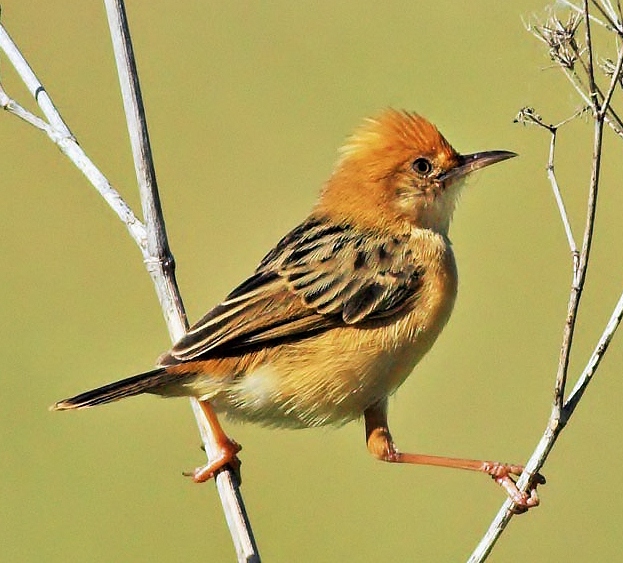 |
| Photo by Julian Robinson (Canberra Ornithologists Group) |
Common name:
golden-headed cisticola (en); fuinha-de-cabeça-dourada (pt); cisticole à couronne dorée (fr); buitrón de capa dorada (es); goldkopf-cistensänger (de)
Taxonomy:
Order Passeriformes
Family Cisticolidae
Range:
This species is found in eastern and northern Australia, through Papua-New Guinea and Indonesia and into southern Asia as far north as and as far west as southern India.
Size:
These birds are 10-11 cm long and weigh around 10 g.
Habitat:
The golden-headed cisticola is found in sub-coastal areas, including wetlands, swamp margins, grasslands, scrublands, savannas, rivers, and irrigated farmland.
Diet:
They mainly feed on insects, taken from the ground or from tall grasses and scrubs, but will also eat grass seeds.
Breeding:
In Australia the golden-headed cisticola breeds in September-March. The nest is a rounded structure with a side entrance near the top, built by both sexes by sewing together living leaves, using fine grasses, plant down and spider webs. The female lays 3-4 eggs, which she incubates alone, but there is no information regarding the length of the incubation and fledging periods.
Conservation:
IUCN status – LC (Least Concern)
This species has a very large breeding range and is reported to be locally common.
The population is estimated to be increasing following recorded range expansions owing to forest clearance and agricultural development.







